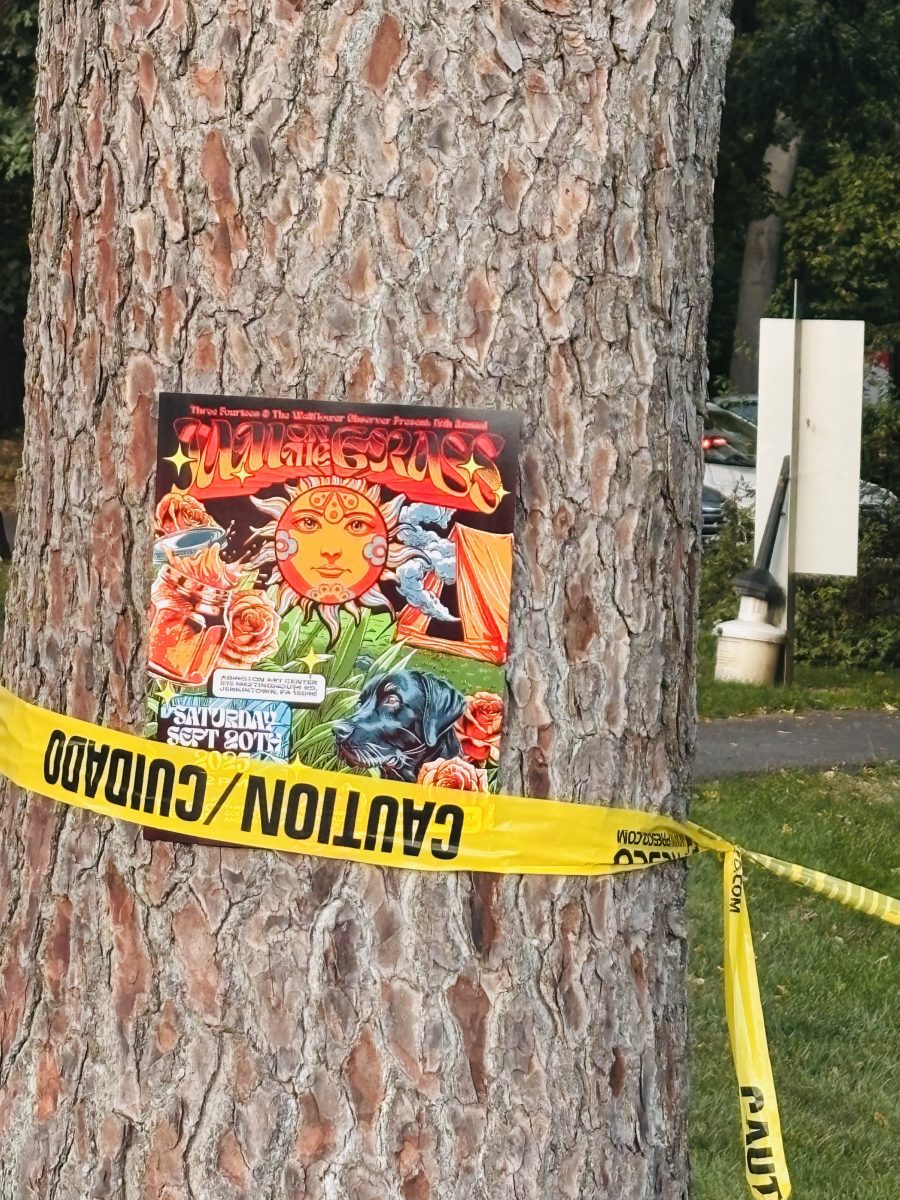By Randy LoBasso
The first thing you hear when you pop in Bells Bells Bells’ new album,A Ghost Could Live Here, is the heavy, reverbed fingerplucks of Kevin Fassett’s (a fitting word might be…) axe, coming at you with the apathetic force of a horror villain.
For more than seven minutes, we travel through the mire and fog, every so often whipped in the face by singer Amandah Romick’s poignant echoing high operatic notes.
Those familiar with the Fishtown band recognize the dim sound as part of a steady musical evolution. Newcomers may be pleasantly surprised, if not creeped.
Journalists have a good time writing about local act Bells Bells Bells, mostly because their music could so easily have been written by a score composer of 70s exploitation and creep flicks. The oft-vocabulary in their reviews is the stuff music writers dream about using, if they only knew the right band. On January 30th, Bells Bells Bells held a CD release party at South Street’s Tri Tone, showing off their dark sound, which, since the band’s inception, has sunk deeper into the grave, emanating a pitch-black psych opera through songs like the Velvet Undergroundy “Little Hours” and “A Prophet On The Horizon,” reminiscent of Pink Floyd’s Syd Barrett era.
This foursome have been celebrating in their corner of Philadelphia’s music scene since 2005. They’ve independently released three albums, their two most recent, Throw Down Your Anchor and the aforementioned A Ghost Could Live Here with producer Isaac Betesh of GreenHouse studios in Bucks County. “He has a great ear for songwriting and he knew our sound,” Amandah says. “We’ve been working with him for a couple years now, and he knows the sound we want to go for.”

Romick’s unmistakable vocal chord tinkering isn’t a mistake. She’s a former student of opera, which becomes a unique quality in Ghost’s favor. Keyboardist Kat Paffett’s soft organ has a creepy lurking sense to it, lingering in the background of each track, helping straddle the line between hard rock and psych-folk (adding up to what we might call…prog-rock). Fassett’s guitar can go from resonant reverb to heavy metal in a single stroke, as is the case on Ghost’s fourth track, “August is a Month,” in which the guitar licks take up it a notch, summoning a Master of Puppets crunch. He can also lead us astray at times, down a banjo-lined blue-colored path.
Though each of the ten songs on A Ghost Could Live Here have been the product of two years of musical dissertation, Amandah says Betesh – who joined the band on a couple tracks, and whose pregnant wife turned their production into a “race against time” according to the singer – helped resolve those songs into a sound the band had dreamed of since birthing the tunes.
She says he pushed the foursome to the limits this time around, which she calls “risky” and “stressful, but good stress.”
“The cool thing about the studio is that you can lay down, basically, as many tracks as you want. We took a lot of risks this time around when it came to that,” she says. Those risks led to at least one song on the album – “Little Hours” – taking on a second life since its first as a live performance piece. What made that new life possible: 11 additional tracks with which to record.
“While experimenting in the studio, we did things, sometimes, that were, I guess, ugly. Sometimes they worked well, sometimes they didn’t,” says Amandah. “Some of the tracks we laid down were intentionally, for lack of a better word, incongruous. Sometimes the tracks alone didn’t go with the overall feeling of a song, and it altered the tune. And we found that to be a good thing.” Some of these additions, she says weren’t even musical in nature – but they worked.
What’s most interesting regarding A Ghost Could Live Here is the questioning feeling of the album’s title becoming the theme for the process of songwriting and recording – spooky, vaporous, ambiguous. The additional laying of tracks, the recording of intentional ugliness over ugliness to create a bittersweet cocktail, this led the songs down a pathway in which they became a life of their own, she says. “We’d spend a lot of time listening back, seeing if the guitar tracks and everything else worked together. Sometimes they worked really, really well, and sometimes they didn’t work at all. And sometimes they worked in an unexpected way, creating the song and turning it in a different direction,” Amandah says. “We kind of went all out.”







